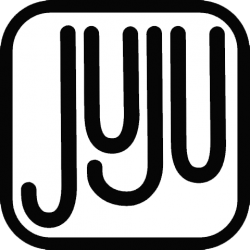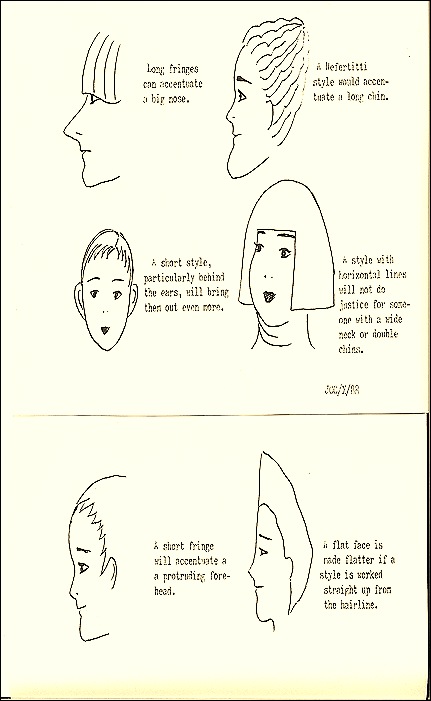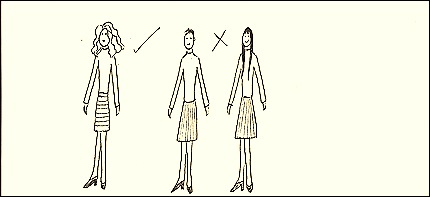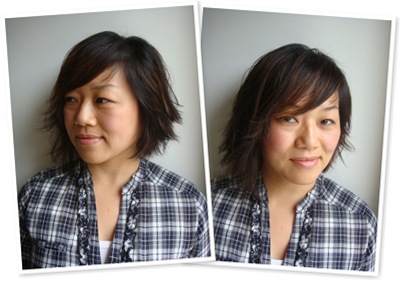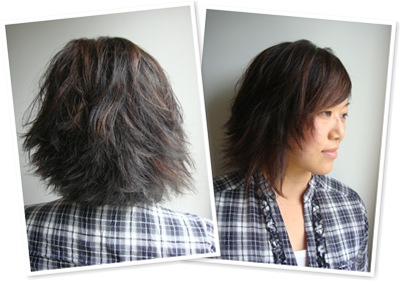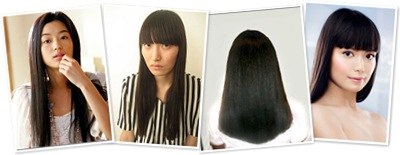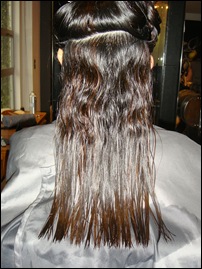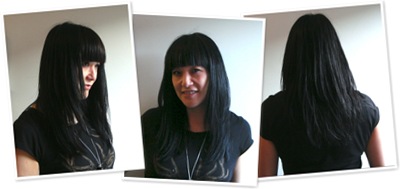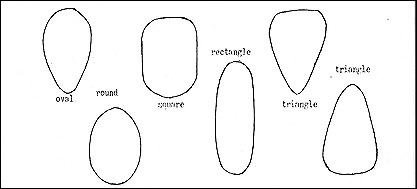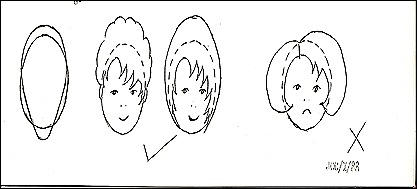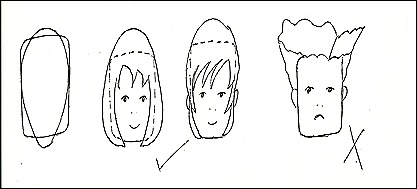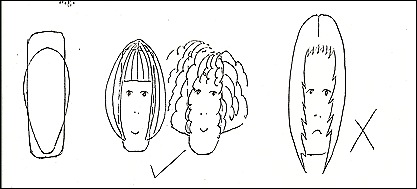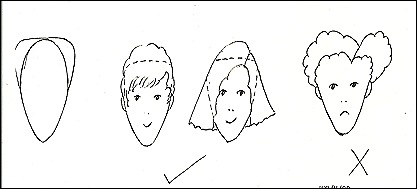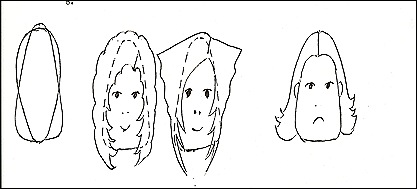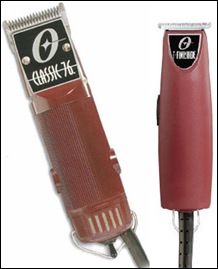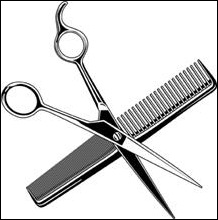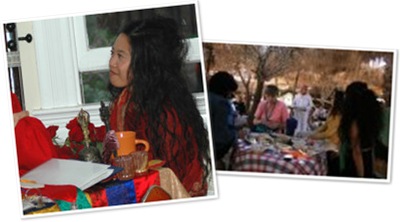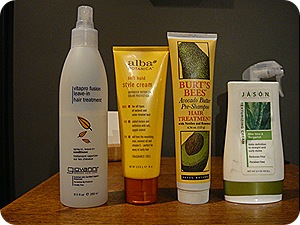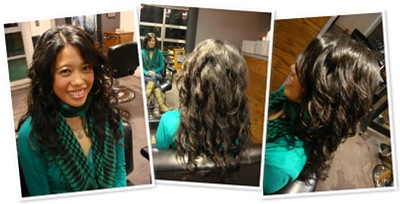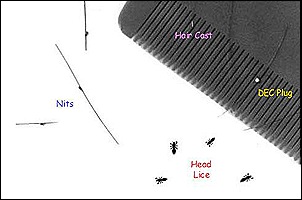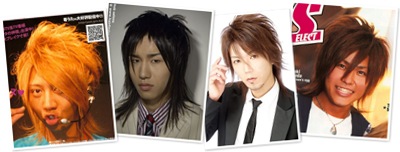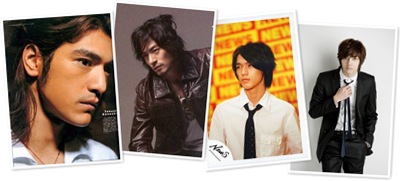Strong Facial Features:
Below are just a few ‘more extreme’ samples of how important features are when choosing hairstyles, the more experience the stylist is the more they can automatically access facial features as soon as they see the client.
(just in case you cant see the text very well, here they are again.)
- Long fringes can accentuate a bigger nose.
- A ‘Nefertiti’ style would accentuate a long chin.
- A short style, particularly around the ears, will bring them out more.
- A style with horizontal lines will not do justice for someone with a wide neck or double chins.
- A short fringe will accentuate a protruding forehead.
- A flat face is made flatter if the style is worked straight up from the hairline.
Height and Body Shapes:
These also make a difference to your choice of hairstyles. It is important for the stylist to see the client before she sits down so that you can take note of her body proportion.
If a tall, thin person had a hairstyle which is very short and close to the head, or very long hair that is straight and flat, then the body length will be accentuated more, whereas if the style had more width, the stream-line would be broken giving an overall better body proportion.
On the other hand, if a person is small but in proportion, then anything that is not TOO wide would be suitable, but if the person was small, and wide in shape, then the situation would be different. To add a hairstyle with width would be adding width to the overall look, but if the style was very short and flat, this would also accentuate the roundness of the body. It is not always easy to reach a happy medium, especially if the client has a certain style in mind. The stylists job is to suggest styles which complement her all round. If the correct approach is used, most clients are willing to accept your ideas and styles, as long as you have a reason to back up your suggestions.
Again, I am using extreme examples to show my points easier, it does not mean that all persons belong in any one category of body shape or that you cannot go against type but in general, we must remember to evaluate the body along with the face shape and features when choosing styles.

